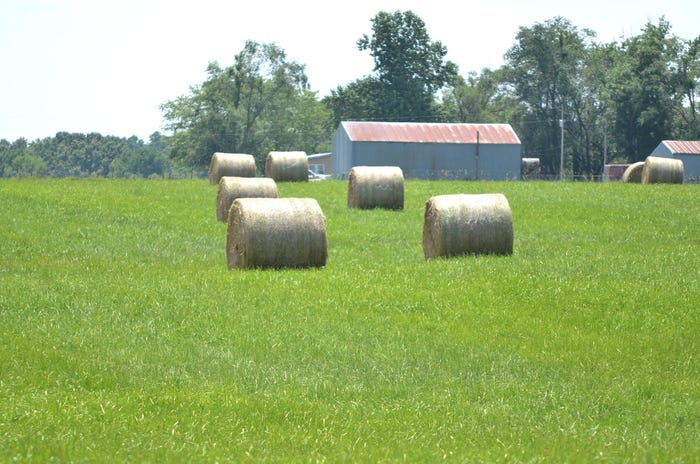
Economists are forecasting good prices ahead for the cattle industry, which may create an opportunity to spend a few dollars this year, but don’t buy that new pickup just yet.
“2024 will be as good as any time we’ve seen since 2014,” says Joe Horner, University of Missouri Extension agricultural economist. “Periods like the next two to three years only happen a few times in a 50-year farming career.”
Horner predicts that these higher margins will lead farmers to look for tax deductions. However, rather than buying new vehicles or farm equipment, he recommends that producers first invest in ways to make their farm business more profitable and resilient when the cattle cycle inevitably turns with lower prices.

INCREASE HAY: Drought is a recurring theme for Missouri farmers. One safeguard against drought is to invest one time in making or buying 50% more hay than you normally need. Carry that hay inventory over every year. That becomes a strategy to keep drought from forcing you to buy hay or sell cattle in a drought.
Horner offers nine tips to increase profits on the farm:
1. Create a separate bull pasture. A defined breeding season reduces mismatched lots at the sale barn. Like calves in weight sell at higher prices. Also, batch calving is easier to manage on the farm.
2. Spend money with your veterinarian. Stay on vaccination schedules. If you don’t have one, get one. “Veterinarians create value on your farm because of what they know,” Horner says. “Pick your vet’s brain and follow their suggested protocol.” Don’t forget to test for bull soundness.
3. Invest in good cattle-handling facilities. Properly designed and maintained handling facilities make working cattle easier. Easy jobs get done, and good facilities lead to fewer injuries. “You can’t put a price on your family’s safety,” Horner adds.
4. Invest in good fences for weaning. Bawling calves bring less money at the sale barn, Horner says. Do the extra work. Build the fence and wean calves before selling. Buyers pay for weaned calves.
5. Increase extra hay inventory. Add 50% more hay stock once and rotate out hay yearly. The carrying cost is a good investment. “That’s your drought insurance, and it is easier than finding hay, and it makes life less stressful,” Horner says.
6. Do soil tests. A soil test tells you if you need to add nutrients to boost yields. Lime is a cheap, undervalued nutrient that can increase forage production, Horner notes.
7. Add native warm-season grasses to pastures. Warm-season grasses make your operation more drought-resilient, need less fertilizer, boost summer calf gains and can improve herd reproduction performance, Horner says. State and federal incentives are available to plant natives.
8. Convert to rotational grazing. Rotational grazing systems allow producers to mitigate drought, improve soil health, increase forage production and extend the grazing period. The Missouri Center for Regenerative Agriculture has more information on federal cost-share funds for rotational grazing.
9. Buy risk insurance programs. Pasture, Rangeland, Forage insures against drought, and Livestock Risk Protections against low prices. Check out the MU Extension publications “Pasture, Rangeland, Forage (PRF) Insurance in Missouri” and “Livestock Risk Protection (LRP) Insurance” for insights into these programs. Then work with a trusted insurance agent.
One final tip: Seek the advice of a farm tax preparer.
The IRS has new resources to measure compliance. Talk with your tax preparer to make sure your farm is bulletproof. Comply with reporting rules for contractors and laborers who need to receive 1099 or W-2 forms.
University of Missouri Extension contributed to this article.
About the Author(s)
You May Also Like






